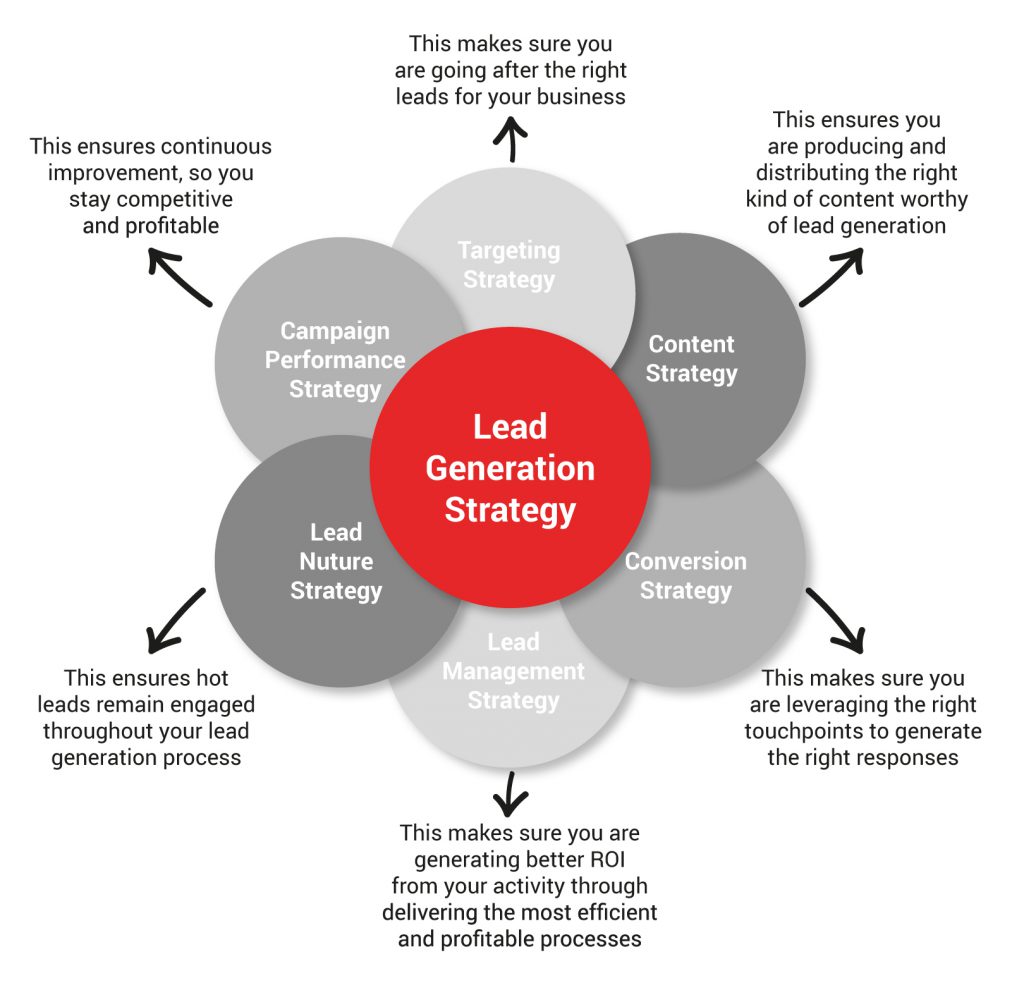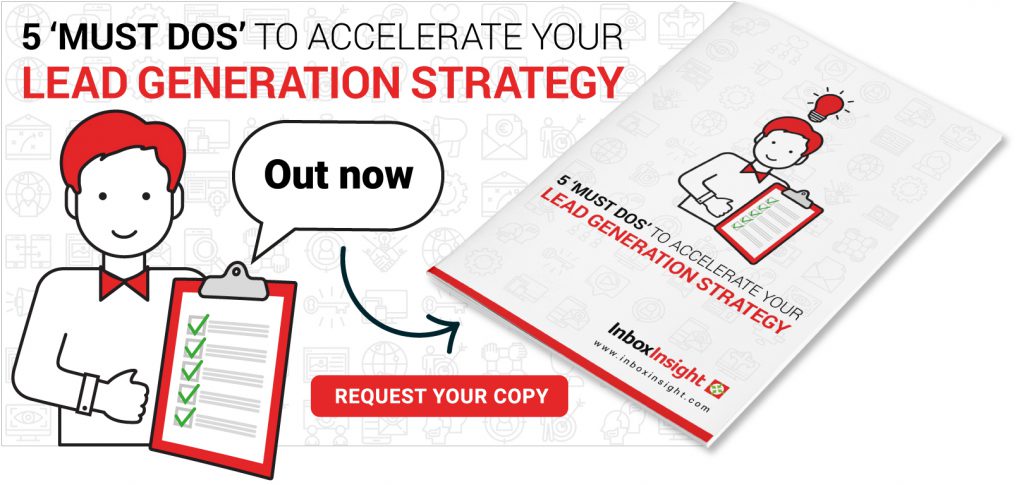In the face of economic and political uncertainty, many organizations return focus to performance driven B2B marketing activities that demonstrate tangible value and most importantly traceable ROI.
Marketers that calculate ROI are 1.6 times more likely to receive higher budgets. (HubSpot)
While brand building activities are taking a hit, trends show that lead generation is not only back but high on the B2B marketing agenda.
This article looks at how to evolve your lead generation strategy in order to adapt to the new market conditions and gain competitive advantage.
Reading time: 3 minutes
How has the B2B lead generation strategy evolved?
Only 18% of marketers say outbound practices provide the highest quality leads for sales. (HubSpot)
The quick-win tactics of collecting large volumes of leads from a single outbound campaign to fuel your sales pipeline, are rapidly being replaced with a longer-term, multi-faceted approach. Why?
New legislation has put a tighter process around reaching audiences, an explosion in content means your message is being drowned and growing complexities within B2B buying processes have driven the need for lead generation strategies to become more complex.
Buyers are self-educated, empowered and demanding.
47% of buyers view 3-5 pieces of content before engaging with a sales rep. (Demand Gen Report)
The best B2B lead generation strategies pull strength from the most effective tactics to reflect this.
How do I bring my lead generation strategy up to the mark?
Fewer than 10% of leads convert on the first touch. (Forbes)
If the path from lead to customer has got a lot longer and complex, so must your lead generation strategy.
The most effective lead generation strategies are made up of a set of carefully orchestrated sub-strategies, each with their unique set of tactics that work to directly address their role within the lead generation process.
Designing your lead generation strategy around this structure enables B2B marketers to better control, optimize and monitor their lead generation process from lead capture right through to customer conversion.

Targeting Strategy
39% of marketers say proving the ROI of their marketing activities is their top marketing challenge. (HubSpot)
When your marketing activities are under scrutiny any waste needs to be minimalized. This means targeting needs to be tighter with an emphasis on audience relevancy.
As such, the old ‘spray and pray’ technique is out the window while data-backed precision targeting is here to stay.
In order to ensure ROI from your lead generation activities, its vital you go after the ‘right’ types of leads for your business.
83% said focusing on lead quality over quantity was a priority. (Demand Generation Benchmark Report)
In the past you may have used first party data to define the types of businesses you should be focusing your efforts on. This is great for establishing audience demographics and ensuring you understand who your most valuable customer are.
However, technology has enabled lead generation to evolve beyond this approach. Access to digital insights such as Searching, Browsing, Action, Firmographic and Predictive intent data types have upped the ante, making more precision-based targeting possible.
From this, a whole new set of data-driven tactics have emerged, breathing new life into the capabilities of lead generation that surpass past restrictions.
Recommended reading: Lead Qualification; Does PANDA Outstrip BANT in the Long Run?
Content Strategy
95% of buyers are willing to share their name, company and email address in return for content (Demand Gen Report)
If you’re using content to fuel your lead generation you’ve got to get it right. Irrelevant or poorly written content will not incite your readers to part with their details. You have to make sure you’re offering premium content they really want to engage with.
However, 35% of content marketers don’t have a documented strategy. (Content Marketing Strategy)
In our article B2B Marketing Plan; A Compelling Case for B2B Content Marketing we explore in detail how to tackle your content strategy in order to plan, create and distribute premium content that generates the best ROI.
Conversion Strategy
Only about 22% of businesses are satisfied with their conversion rates. (Econsultancy)
A conversion strategy will help you identify how to coordinate all your touchpoints in the most optimized way to generate real value for your audience.
From landing page optimization right through to user journeys and cross channel engagement, a conversion strategy is crucial for maximizing all opportunities to convert leads into customers.
Lead Management
46% of marketers with well-planned lead management strategies have sales teams who follow up on more than 75% of leads. (Strategic IC)
A formalized lead management process or system is essential for helping you track ROI because it will identify where and why lead drop off occurs in your lead generation process.
No matter how good you are at attracting and converting visitors into leads, most B2B sales cycles are complex with many factors impacting your conversion rate success.
Having a well-documented and thought out system will ensure all efforts, activities and technologies are coordinated in the most efficient way to achieve your marketing goals.
Failure to do so could mean you stumble across many avoidable obstacles, such as sales and marketing misalignment, sluggish lead follow up and ultimately – wasted budgets.
Lead Nurture Strategy
Lack of nurture is the main cause for 79% of marketing leads never converting into sales. (Marketing Sherpa)
Your lead nurture strategy should identify how you can keep your leads warm through delivering a set of follow-up communications.
Our article Lead Nurturing; How to Transform your Leads into Revenue provides many pointers for improving ROI through executing an effective lead nurture program.
Campaign Performance Strategy
Continuous improvement is what every B2B marketer should be striving towards. This is impossible without accurate analysis of your lead generation campaigns.
The best campaign performance strategies should outline the key control mechanisms your going to use to keep your performance on track. This includes aligning your KPIs with your overarching lead generation objectives and assigning more granular marketing metrics to tactical goals.
Your performance strategy should also outline how data can be transformed into actionable knowledge and how this is shared across teams.
Throughout our marketing mini-series on B2B lead generation we will be focusing in more detail on how elements of the lead generation strategy can be evolved to keep your approach relevant to your audiences and competitive landscape.
In the meantime, our latest resource, 5 ‘Must Dos’ to Accelerate your Lead generation Strategy is available to download right now…









